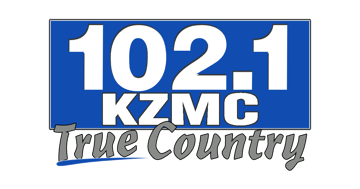Rural Mainstreet Economy Slumps into Negative Territory for Fifth Straight Month

January 2024 Survey Results at a Glance:
For a fifth straight month, the overall Rural Mainstreet Index sank below growth neutral. Farmland prices expanded for the month. The last time the farmland price index fell below growth neutral was November 2019. Higher borrowing costs, tighter credit conditions and weaker grain prices pushed the farm equipment sales index below growth neutral for the seventh time in the past eight months. Of those farmers transitioning in the next decade, bank CEOs expect 53.8% to transfer ownership to heirs, and 42.3% anticipate the sale to other farmers in the area.
Economic confidence remained very weak.
OMAHA, Neb. (Jan. 18, 2024) — For a fifth straight month, the overall Rural Mainstreet Index (RMI) sank below growth neutral, according to the January survey of bank CEOs in rural areas of a 10-state region dependent on agriculture and/or energy.
Overall: The region’s overall reading for January rose to 48.1 from 41.7 in December. The index ranges between 0 and 100, with a reading of 50.0 representing growth neutral.
“Higher interest rates, weaker agriculture commodity prices and a credit squeeze are having a significant and negative impact on Rural Mainstreet businesses and on Rural Mainstreet farmers. Jim Eckert, CEO of Anchor State Bank in Anchor, Ill. indicated that unless crop prices improve, 2024 will not be a good year for area farmers,” said Ernie Goss, PhD, Jack A. MacAllister Chair in Regional Economics at Creighton University’s Heider College of Business.
Farming and ranching land prices: The region’s farmland price index fell to a still strong 64.0 from December’s 67.2. The farmland price index has remained above growth neutral for every month since November 2019. “Creighton’s survey continues to point to solid, but slowing, growth in farmland prices. Approximately, 28.0% of bankers reported that farmland prices expanded from December levels,” said Goss.
Farm equipment sales: The farm equipment-sales index for January sank to 47.9 from December’s weak 49.5. “This is the seventh time in the past eight months that the index has fallen below growth neutral. Higher borrowing costs, tighter credit conditions and weaker grain prices are having a negative impact on the purchases of farm equipment,” said Goss.
Jim Eckert, CEO of Anchor State Bank in Anchor, Ill., said, “Input prices for 2024 are somewhat reduced from 2023, but cash rents are level.”
“For a fourth consecutive month, several bankers voiced concerns over economic losses by pork producers in their area,” said Goss.
Terry Engelken, Vice President of Washington State Bank in Washington, Iowa, reported that, “Hog finishers are still facing financial challenges.”
When asked about the share of farm clients facing generational transition, on average, bankers estimate that approximately 25% will face transition issues in the next decade. Furthermore, 19.2% expected transitioning farm clients to pose an economic opportunity for their banking operations with 65.4% expecting both opportunities and threats from this transitioning.
Of those transitioning, bank CEOs expected 53.8% to transfer ownership to heirs, and 42.3% anticipate the sale to other farmers in the area. Bankers expect virtually no sales to farmers outside the area, including foreign buyers.
Banking: The January loan volume index declined to a still strong 71.9 from 80.9 in December. The checking deposit index expanded to 62.0 from December’s very weak 41.4. The index for certificates of deposits and other savings instruments slipped to a still strong 62.0 from 65.5 in December.
Hiring: The new hiring index for January increased to growth neutral, 50.0, from December’s 49.0. “Almost 100% of bankers reported no change in hiring from December’s hiring activity,” said Goss.
Confidence: Rural bankers remain very pessimistic about economic growth for their area over the next six months. The January confidence index sank to 38.5 from December’s 43.3. Falling agriculture commodity prices and higher interest rates over the past several months continued to constrain business confidence.
Home and retail sales: Both home sales and retail sales sank below growth neutral for the last three months. The January home-sales index slumped to 38.0 from 43.3 in December. “Elevated mortgage rates and limited supplies of homes are sinking the home sales index below growth neutral in rural areas,” said Goss.
The retail-sales index for January fell to 46.0 from 46.6 in December. “High consumer debt and elevated interest rates are cutting into retail sales in rural areas of the region,” said Goss.
The survey represents an early snapshot of the economy of rural agriculturally- and energy-dependent portions of the nation. The Rural Mainstreet Index is a unique index covering 10 regional states, focusing on approximately 200 rural communities with an average population of 1,300. The index provides the most current real-time analysis of the rural economy. Goss and Bill McQuillan, former Chairman of the Independent Community Banks of America, created the monthly economic survey and launched it in January 2006.
Below are the state reports:
Colorado: Colorado’s RMI for January soared to 73.7 from December’s 52.4. The farmland and ranchland price index for January dropped to 69.7 from December’s 74.1. The state’s new hiring index declined to 57.5 from 59.4 in December. U.S. Bureau of Labor Statistics (BLS) data indicate that over the past 12 months, the state’s Rural Mainstreet economy expanded employment by 5.6%, while the state’s urban areas grew employment by a much lower 0.6%.
Illinois: The January RMI for Illinois climbed to 50.0 from December’s 46.5. The farmland price index declined to 63.0 from 66.3 in December. The state’s new hiring index dipped to 49.1 from December’s 49.7. U.S. Bureau of Labor Statistics (BLS) data indicate that over the past 12 months, the state’s Rural Mainstreet economy expanded employment by 1.7%, while the state’s urban areas grew employment by a much lower 0.8%.
Iowa: January’s RMI for the state decreased to 44.3 from 45.5 in December. Iowa’s farmland price index for January declined to 61.4 from December’s 64.0. Iowa’s new hiring index for January increased to 45.1 from 46.9 in December. U.S. Bureau of Labor Statistics (BLS) data indicate that over the past 12 months, the state’s Rural Mainstreet economy expanded employment by 1.1%, while the state’s urban areas grew employment by a much lower 0.3%.
Kansas: The Kansas RMI for January rose to 41.9 from December’s 38.3. The state’s farmland price index fell to 60.7 from 64.0 in December. The new hiring index for Kansas dipped to 46.3 from December’s 46.8. U.S. Bureau of Labor Statistics (BLS) data indicate that over the past 12 months, the state’s Rural Mainstreet economy expanded employment by 0.7%, while the state’s urban areas grew employment by a much higher 1.5%.
Minnesota: The January RMI for Minnesota improved to a weak 44.1 from December’s 36.0. Minnesota’s farmland price index decreased to 61.3 from 63.3 in December. The new hiring index for January increased to 47.1 from December’s 46.0. U.S. Bureau of Labor Statistics (BLS) data indicate that over the past 12 months, the state’s Rural Mainstreet economy expanded employment by 1.6%, while the state’s urban areas grew employment by an identical 1.6%.
Missouri: The state’s January RMI sank to a regional low of 31.6 from December’s 41.2. The farmland price index declined to 57.7 from 59.6 in December. The state’s new hiring gauge rose to 42.7 from 41.3 in December. U.S. Bureau of Labor Statistics (BLS) data indicate that over the past 12 months, the state’s Rural Mainstreet economy expanded employment by 1.0%, while the state’s urban areas grew employment by a much higher 1.5%.
Nebraska: The Nebraska RMI for January increased to 39.5 from 37.3 in December. The state’s farmland price index for January declined to 60.0 from 63.7 in December. Nebraska’s January new-hiring index slumped to 45.5 from December’s 46.5. U.S. Bureau of Labor Statistics (BLS) data indicate that over the past 12 months, the state’s Rural Mainstreet economy expanded employment by 0.3%, while the state’s urban areas grew employment by a much higher 1.3%.
North Dakota: North Dakota’s RMI for January climbed to 64.3 from 52.3 in December. The state’s farmland price index declined to 67.0 from 69.7 in December. The state’s new hiring index expanded to 54.2 from December’s 53.8. U.S. Bureau of Labor Statistics (BLS) data indicate that over the past 12 months, the state’s Rural Mainstreet economy expanded employment by 4.1%, while the state’s urban areas grew employment by a much lower 0.7%.
South Dakota: The January RMI for South Dakota improved to 50.5 from 46.1 in December. The state’s farmland price index dropped to 63.1 from 66.2 in December. South Dakota’s January new hiring index slipped to 49.3 from 49.5 in December. U.S. Bureau of Labor Statistics (BLS) data indicate that over the past 12 months, the state’s Rural Mainstreet economy expanded employment by 2.6%, while the state’s urban areas grew employment by an identical 2.6%.
Wyoming: The January RMI for Wyoming increased to 56.9 from December’s 49.9. The January farmland and ranchland price index sank to 64.9 from 67.3 in December. Wyoming’s new hiring index rose slightly to 51.6 from December’s 50.8. U.S. Bureau of Labor Statistics (BLS) data indicate that over the past 12 months, the state’s Rural Mainstreet economy expanded employment by 3.7%, while the state’s urban areas grew employment by a much lower 1.2%.
